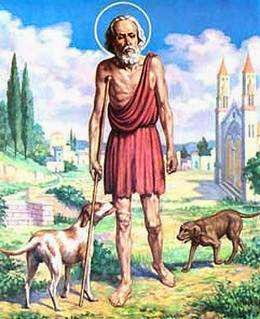This can be regarded on several levels. On a purely physical level, in which the Hamingja can be considered to be the family reputation. The actions of any member can affect the reputation of the entire family and can last through several generations.
On a more esoteric level, the Hamingja can be seen as a many faceted 'soul', each facet of which was the separate soul of an individual person, and yet part of the joint soul of the entire family. It can be seen from this that the 'reputation' could affect the entire future of the family and the actions of one family member could create good, or bad, luck for many generations to come.
Each family was seen as coming from one of the deities, and so each individual was an extension of that deity. This is demonstrated in 'The List of Rig'.
Also, the Anglo Saxon Chronicle lists many genealogies going back to Odin. Later, when Christianity became the leading religion, Odin was seen as being descended from Adam (for instance, the Parker Chronicle, AD853).
The main purpose of this aspect of Hamingja was to attempt to lead a worthy life to eventually lead the family soul back to that deity.
After death, the individual soul would go to Hel - this was not a place of punishment, as in the Christian tradition, but a place of rest between incarnations. (In this, the figure of Hel as being half corpse and half beautiful woman represents the triple Goddess in the aspect of transforming from Crone to Maiden, embodying the concept of death and rebirth).
Alternatively, the soul would go to Asgard to reside in the hall of their family's deity: in other words, they would become one with their patron deity. This was a final destination, the soul would not be reborn again.
This could be due to that particular individual having reached a level comparable to the Buddhist concept of Enlightenment, or to the entire Hamingja (family soul) being deemed worthy. There is a hall in Asgard with a golden roof for these worthy dead.
According to Asatru tradition, a person could only be reincarnated back into their own family line - they remained part of their Hamingja.
If the family line died out, and therefore the Hamingja came to an end, none of the souls could be reborn. They would either remain in Hel, or become ghosts.
(Another belief was that when the family line died, the entire Hamingja went to Asgard, but this seems a little too easy: entry into Asgard should require more than simply being the last of your line.)
This explains the fierce loyalty to the family and the severe vengeance that could be instigated by the murder of a family member. Since their conduct also affected their Hamingja, it also explains the strong code of honour that the Germanic people lived by.
Hamingja also explains why it was such a great thing to die in battle: the individual soul would go straight to Asgard and side step any further incarnations, thus negating the risk of permanent residence in Hel. Also there was the added kudos of becoming a warrior for the Gods. <<
From The Nine Noble Virtues
http://www.odinsvolk.ca/O.V.A.%20-%20NNV.htm
Postscript: Copyright George King October 02, 2014
There is DNA of the Blood that passes many thinks like Psychic or even Physical abilities.
And then there is unknown to Most a DNA of the Soul that activates the Bloods DNA and carries memories an skills across broken Blood lines, as most are today.
When both Blood and Soul DNA match up the Power is the Greatest
TDK












